Alla Barsehyan, head doctor of the hospital in Bashtanka in southern Ukraine, has been reluctantly acquiring expertise in a new and unwelcome field.
“Grad rocket launchers, warplanes, Tochka-U missiles – now we know how they all sound and we can distinguish between them,” she says, listing a few of the weapons that Russia’s military has used in the Bashtanka area since it invaded Ukraine two months ago.
“But this was different. It whistled as it came in over the town and the explosion was huge,” she recalls of the missile strike on April 19th that destroyed the hospital’s outpatient clinic, badly damaged its dialysis department and smashed windows all over a medical complex that served more than 100,000 residents of the wider Bashtanka district.
“When the missile hit, a woman had just given birth and an operation had to be interrupted and continued later in a different place, once we had evacuated everyone here.”

She says it was a “miracle” that no one was killed and that damage to the main building was relatively superficial, allowing staff to bring patients back and resume treatment and surgery after debris was cleared and empty windows frames boarded up.
Local officials say there was no military presence anywhere near the hospital, making some Bashtanka residents suspect that the strike may have been revenge for the part they played in routing Russian troops who tried to take the town on March 1st.
"Some of us had automatic rifles, those who didn't had petrol bombs, and some hunters brought their own guns," deputy mayor Oleksandr Vasylyev recalls of a motley force comprising 16 town councillors and about 50 territorial defence volunteers.
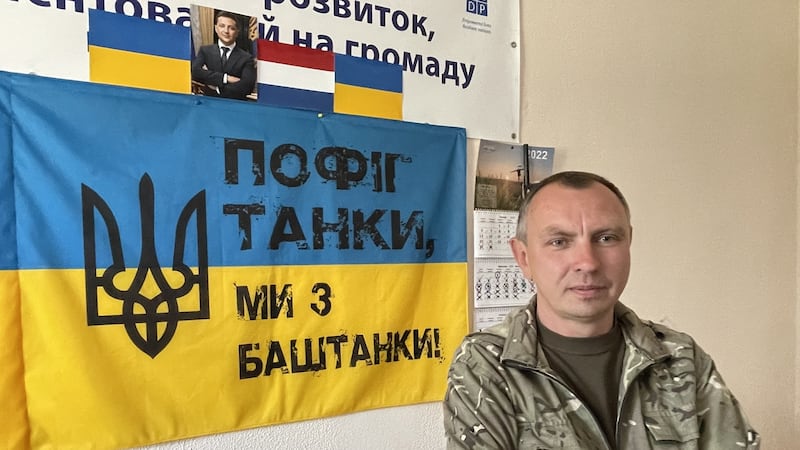
“We positioned ourselves in places where we could take them by surprise,” he says of a convoy of Russian armoured vehicles, artillery pieces, Grad multiple rocket launchers, supply trucks and at least one powerful Pantsir missile system.
“And when they came into town, we hit them with everything we had.”
Disarray
Mayor Oleksandr Berehovyi says the convoy of 200 – 300 military vehicles entered Bashtanka, which had a pre-war population of 12,000, in several stages.

“The first group came through and we didn’t touch it – you can’t do much damage to armoured vehicles with Kalashnikovs and petrol bombs – but in the second and third groups we hit supply trucks and Grads, and those sections of the convoy got trapped.”
Some Russian vehicles that were not pinned down in Bashtanka turned their fire on the town, destroying several buildings and perhaps elements of their own unit, while others tried to continue north to Novyi Buh, a slightly larger town that is just 75km from Kryvyi Rih, a major industrial city and hometown of Ukrainian president Volodymyr Zelenskiy.
Leaving Bashtanka in disarray, the convoy was then attacked and destroyed by Ukrainian helicopters, and Russia's attempt to secure a key road between Kryvyi Rih and the government-controlled port of Mykolaiv on the Black Sea coast had failed.

“Our air force worked really accurately and efficiently to take out the artillery and armoured vehicles that we couldn’t do much about,” says Vasylyev, standing in the mayor’s office beside a Ukrainian flag emblazoned with a rhyming rallying cry that translates as: “To hell with tanks, we’re from Bashtanka!”
“We stopped their advance and made them change their plans. They didn’t expect such resistance here, but we got together and gave them a surprise. Some Russians we caught thought they were fighting special forces because the gunfire was so intense from all sides,” he recalls.
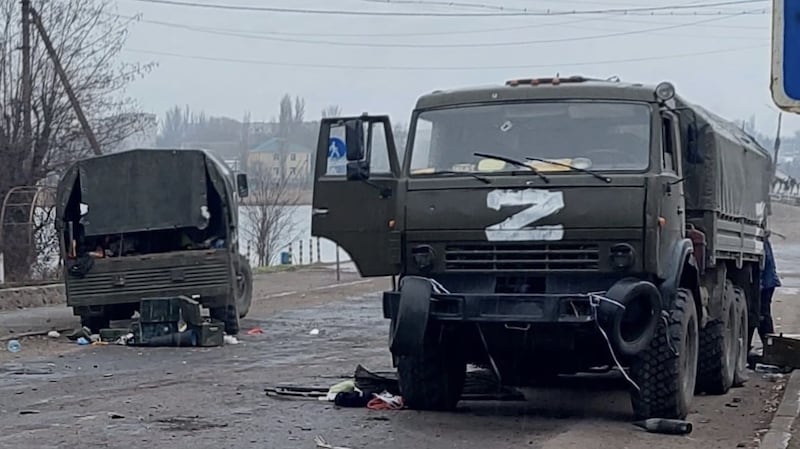
Bashtanka’s town councillors now scroll through photographs of destroyed and captured Russian vehicles and the passports of soldiers captured on March 1st and rounded up later in nearby villages and fields by local territorial defence volunteers.
“We had no choice,” Berehovyi says of local people’s decision to fight.
“It would have been really hard to get [the Russians] out if they’d taken this area. And if I had run away then why would anyone else have stayed? I have two sons and a wife, and these invaders are like dogs, they rape and they kill – it’s just terrible.”
The Russians were driven away from Bashtanka, but the March 1st battle and weeks of shelling have injured several local people, damaged almost 200 buildings around the town and prompted about half of its pre-war population to flee.
“The shelling made the walls of our house shake and it scared the children so much. My grandson, he’s 3½, is now terrified of the slightest loud noise,” says Alla, a local woman wheeling her bike through dusty streets lined with white cherry blossom and red tulips.

“We still hear shelling in the distance, but I hope it’s going to be safe here from now on. I don’t want to leave Bashtanka – home is always best.”
Artillery fire
Russian troops are just 50km to the southeast in the town of Snihurivka, from where Bashtanka couple Vitaliy and Svitlana Butochel and other volunteers are trying to evacuate local people.
“Every day is different and we never know if the Russians are going to let people leave. It’s very tense and unpredictable there in occupied Snihurivka,” Vitaliy explains.
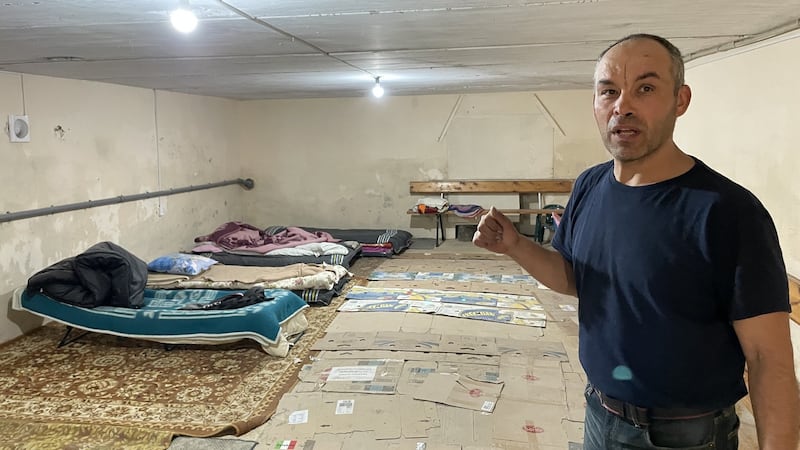
“The other day, over the [Orthodox] Easter weekend, some people got out by pretending to the Russian soldiers that they were just going to visit relatives. They had their bicycles and hid their documents under Easter eggs and cakes that they were carrying. They were let through, and later one of our minibuses picked them up on the road.”
Svitlana says several civilians have been killed by shelling in the Bashtanka district, and mattresses and bedding are still laid out in several rooms and the basement of a church hall where scores of locals spent nights sheltering from Russian artillery fire.
“Our three children are safe in western Ukraine,” she says.
“But we thought that if the Russians took Bashtanka they would come for Vitaliy and me straight away, because we are active volunteers and we help our armed forces.”
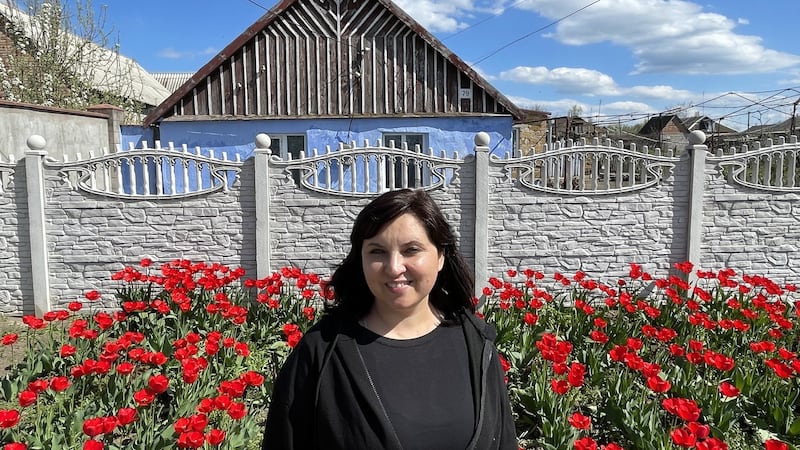
Bashtanka's proximity to the major government-controlled cities of Mykolaiv, Kryvyi Rih, Odessa, Zaporizhzhia and Dnipro fuels fears that its current, relative calm may just be brief respite, as Russian forces seek to move north and west from Mariupol and occupied Kherson.
Heavy weapons
The Kremlin is believed to be intent on securing significant gains in eastern and southern Ukraine before Russia's May 9th Victory Day holiday, when troops and armour will parade through Red Square beneath the gaze of President Vladimir Putin, who launched the invasion on February 24th.
Western powers are now accelerating delivery of heavy weapons to Ukraine to help it withstand the Russian military’s onslaught in the east and south, while warning that the war between the neighbours and former allies could last for many months, or years.
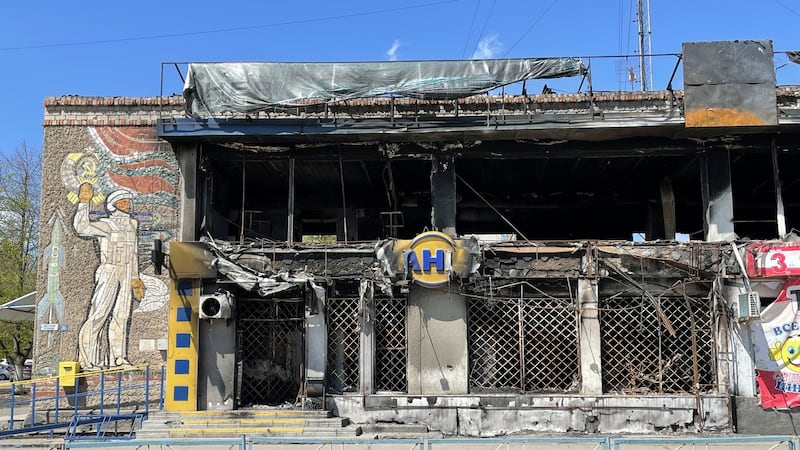
“We can probably get through spring and summer but after that it will be very hard,” Barsehyan says of the shattered windows and other structural damage at Bashtanka’s hospital, where the missile strike caused destruction estimated at more than €1 million.
“Medical staff are used to dealing with death, but nothing can prepare you for this, for full-scale war,” she explains, beside what was the out-patients unit of Bashtanka hospital, but which is now a shell strewn with rubble and wrecked furniture and equipment, including a mangled x-ray machine.
“There’s a kind of fear, an animal fear, that grips you when you hear these explosions. But all the staff stayed in control and no one was abandoned,” she says, in what could also be a description of how Bashtanka’s people stood in its defence.
“We all did what we had to do, and we held out.”











